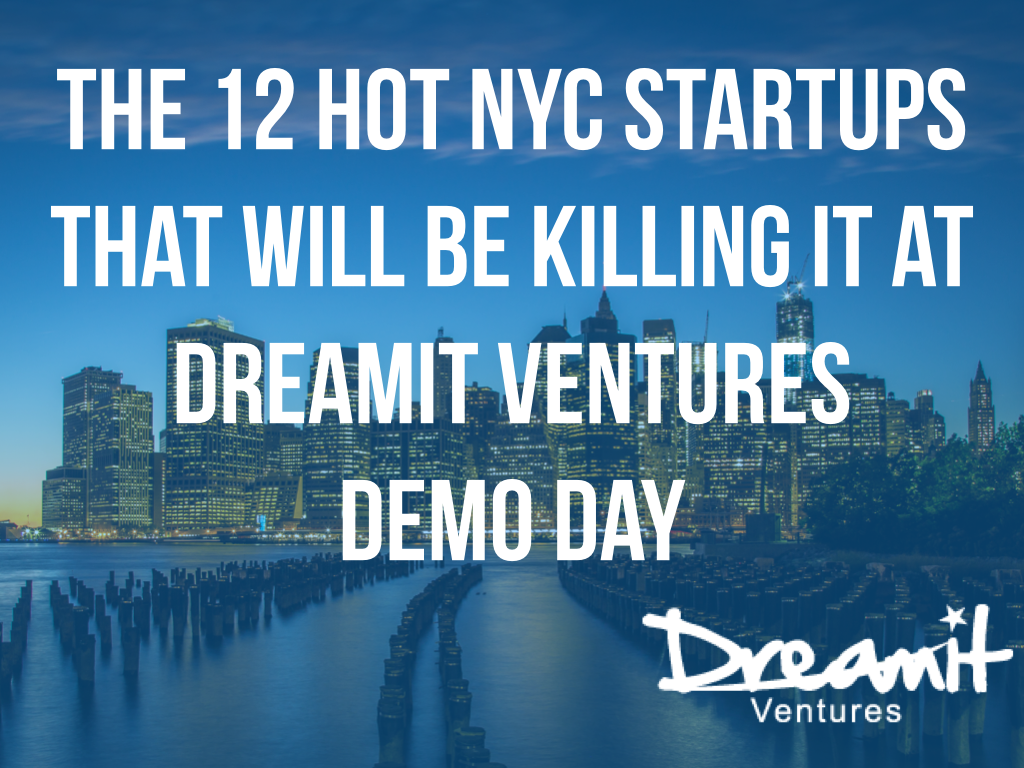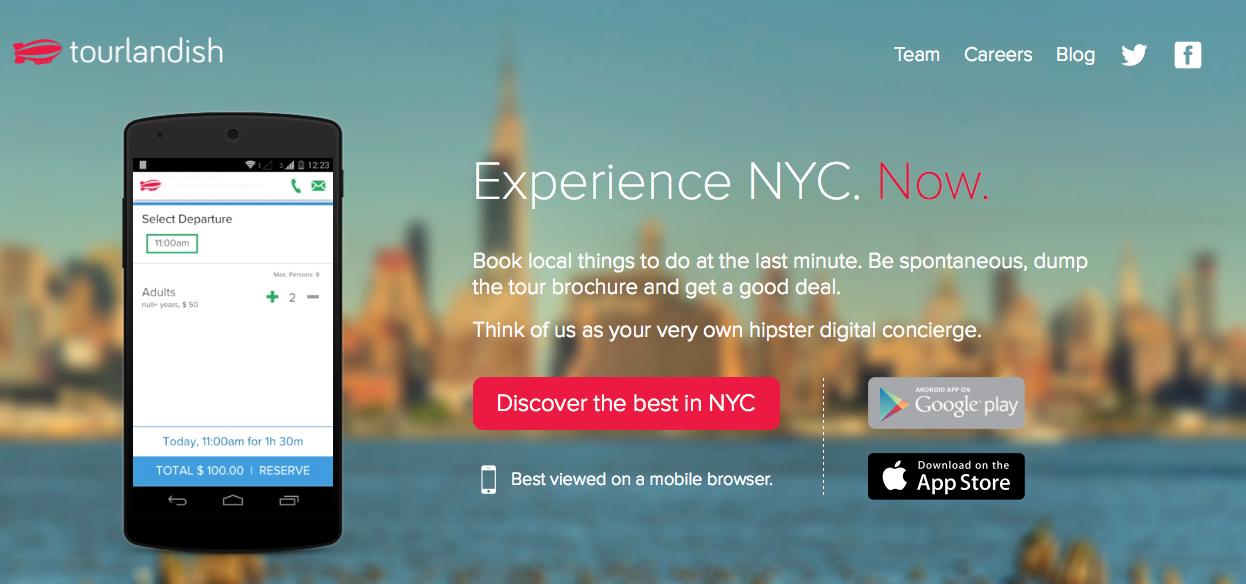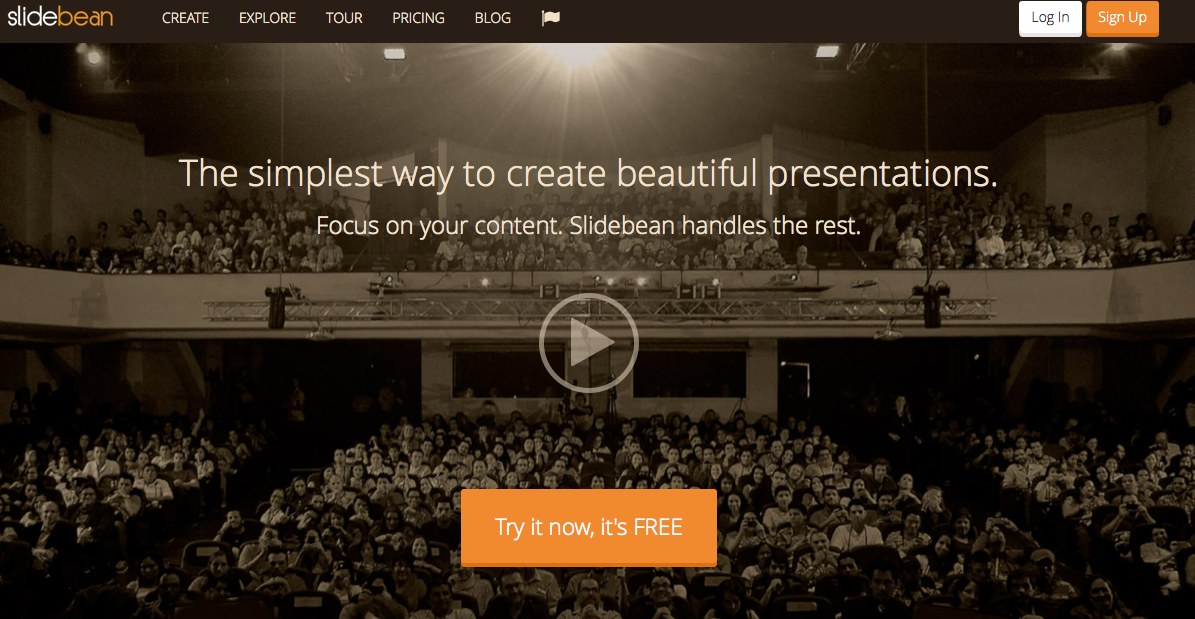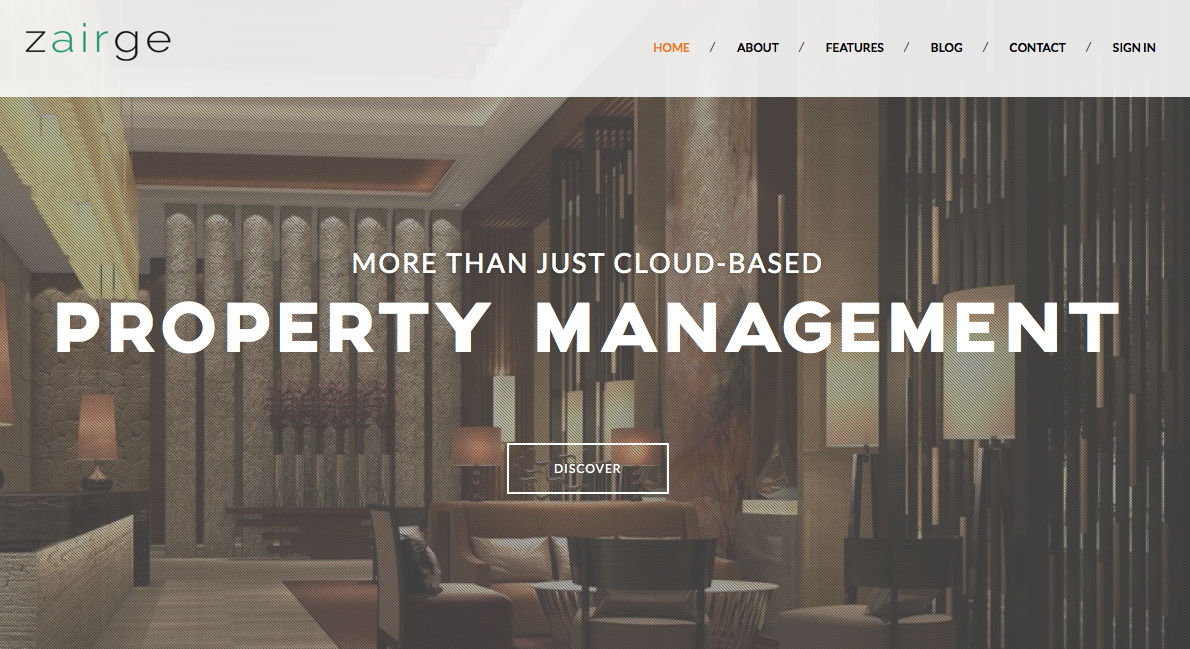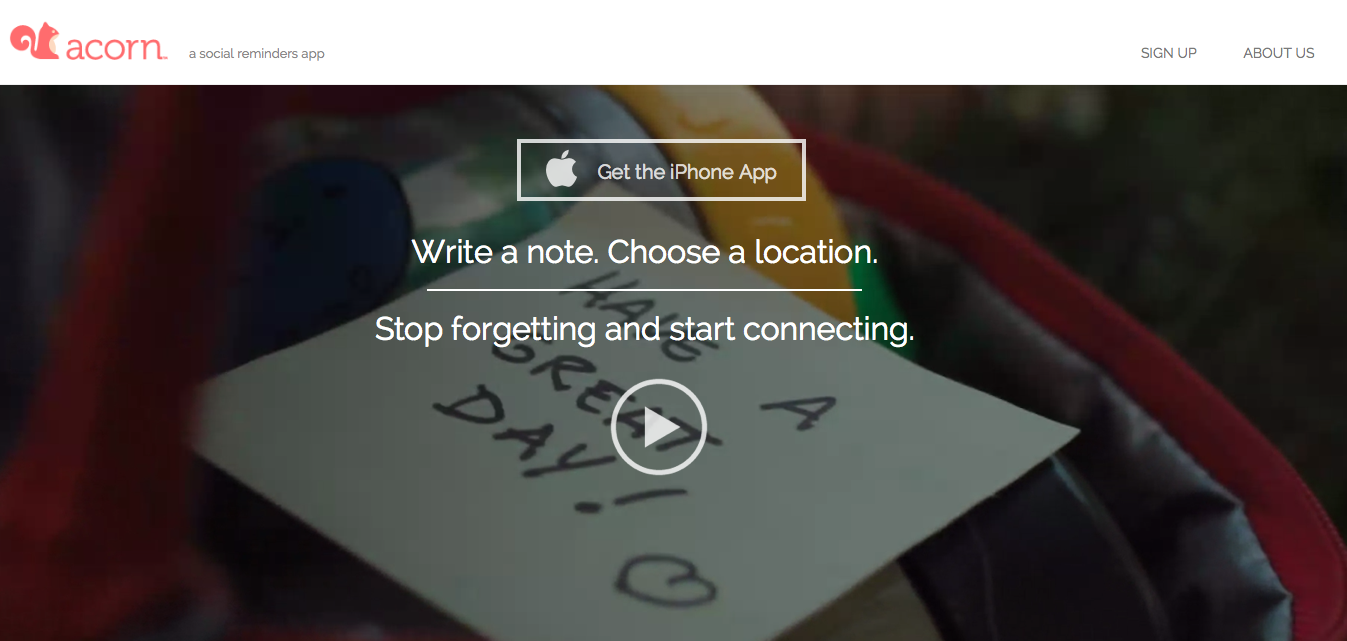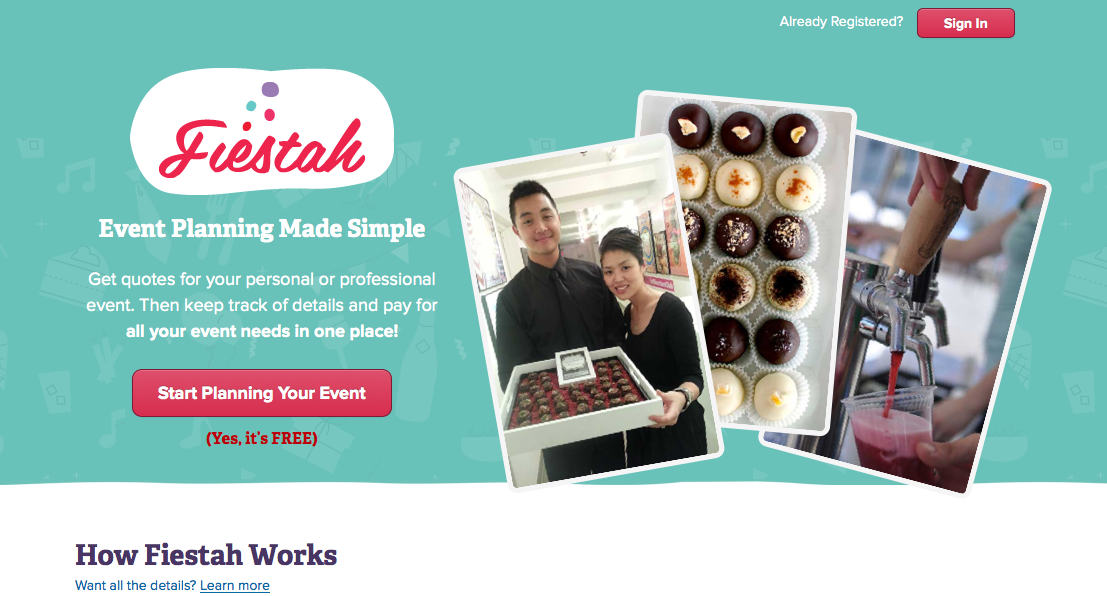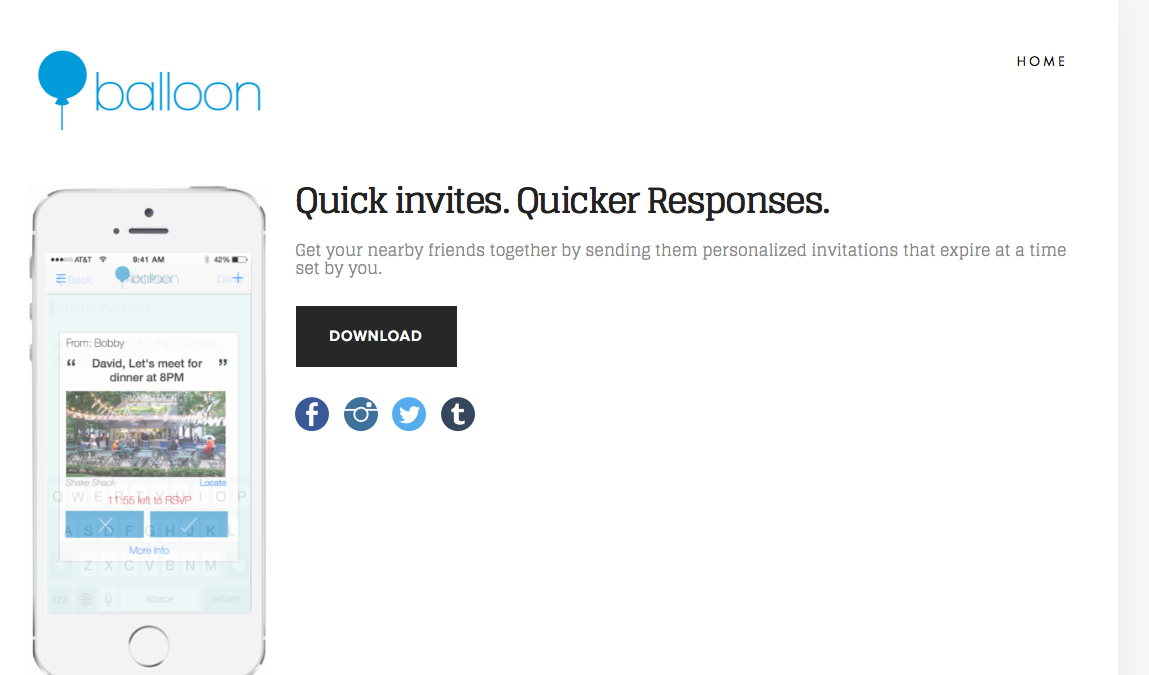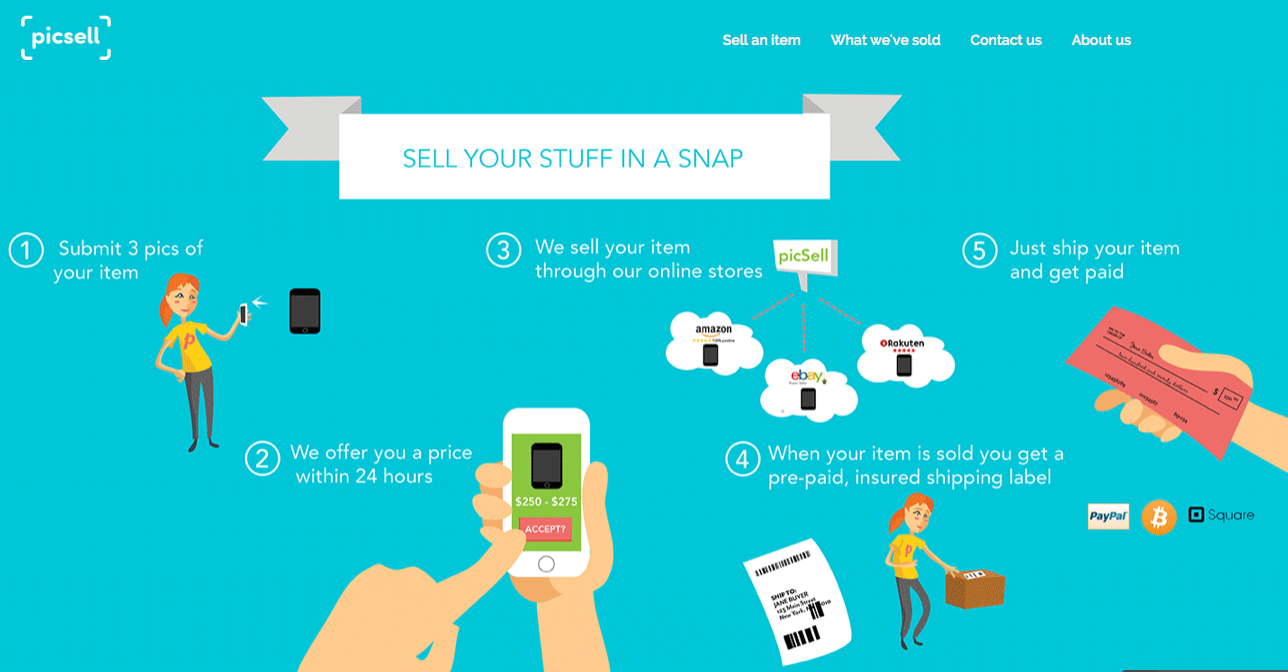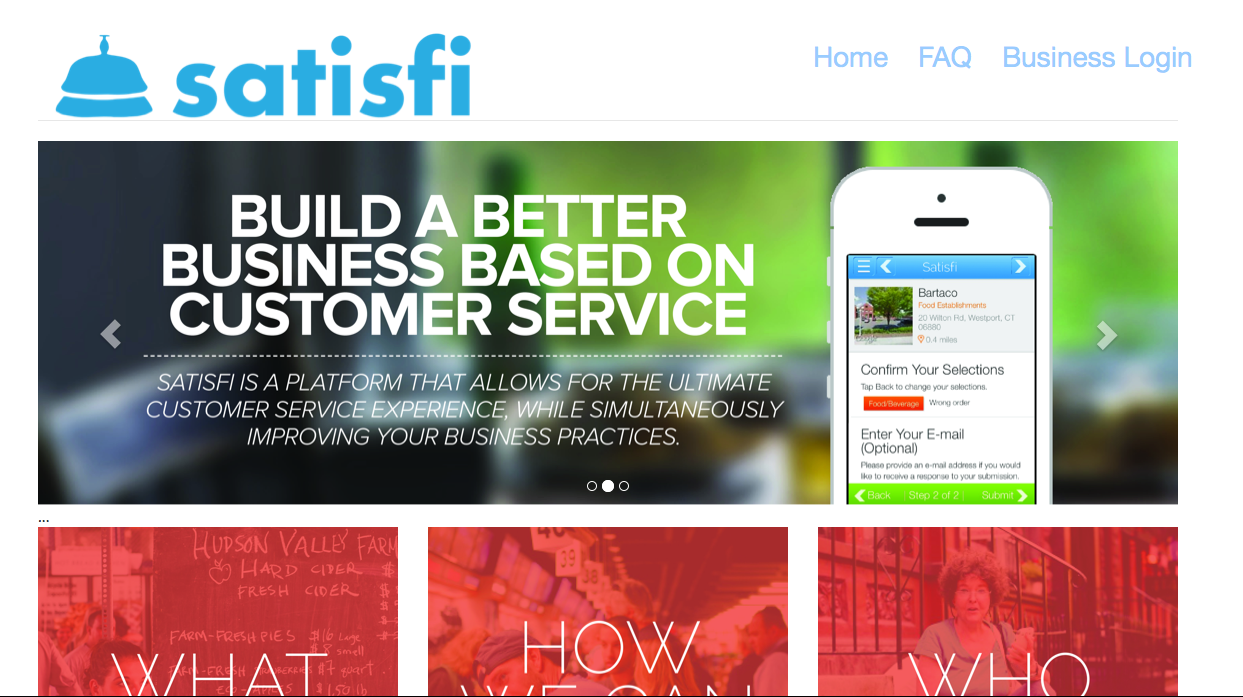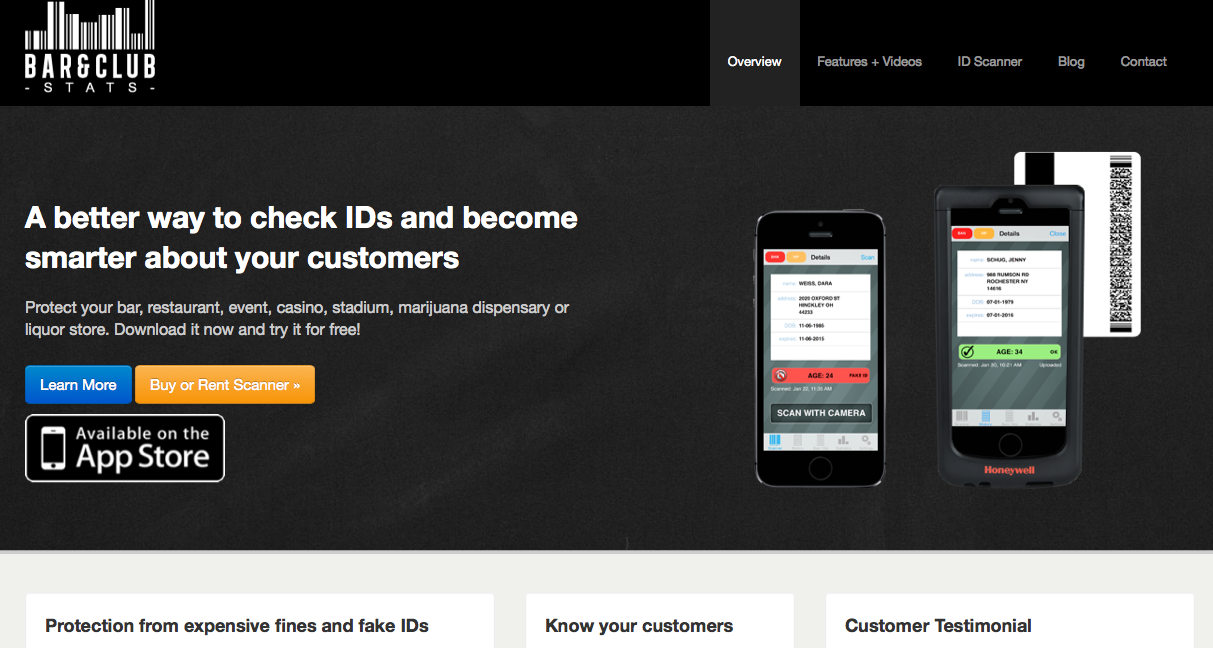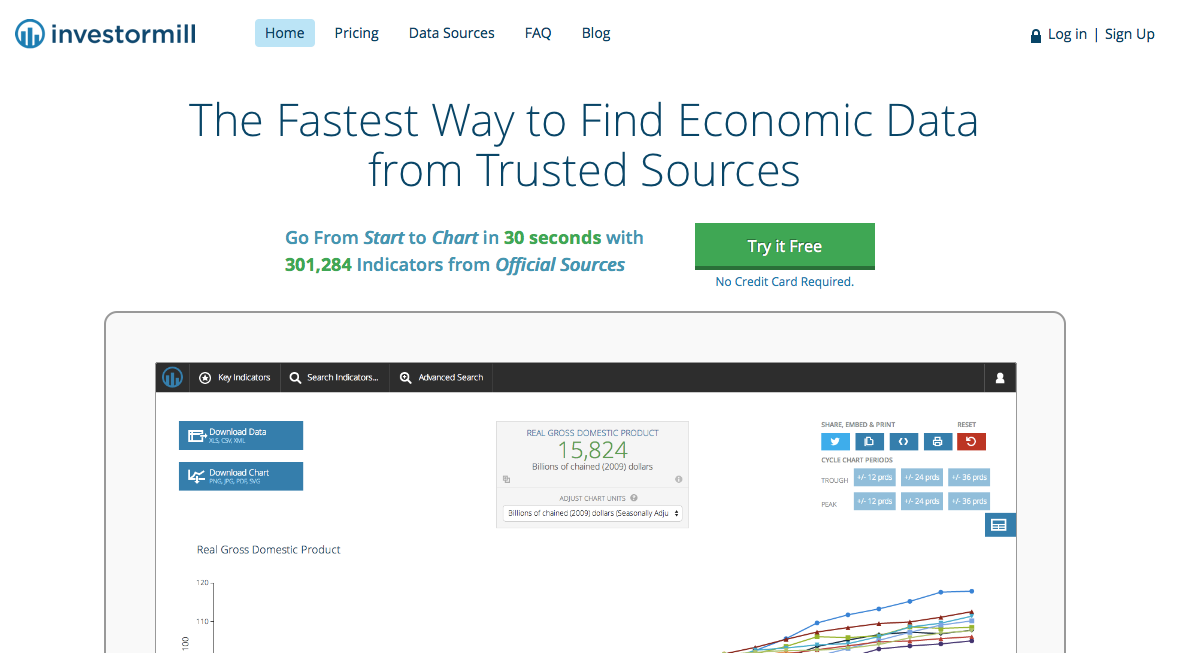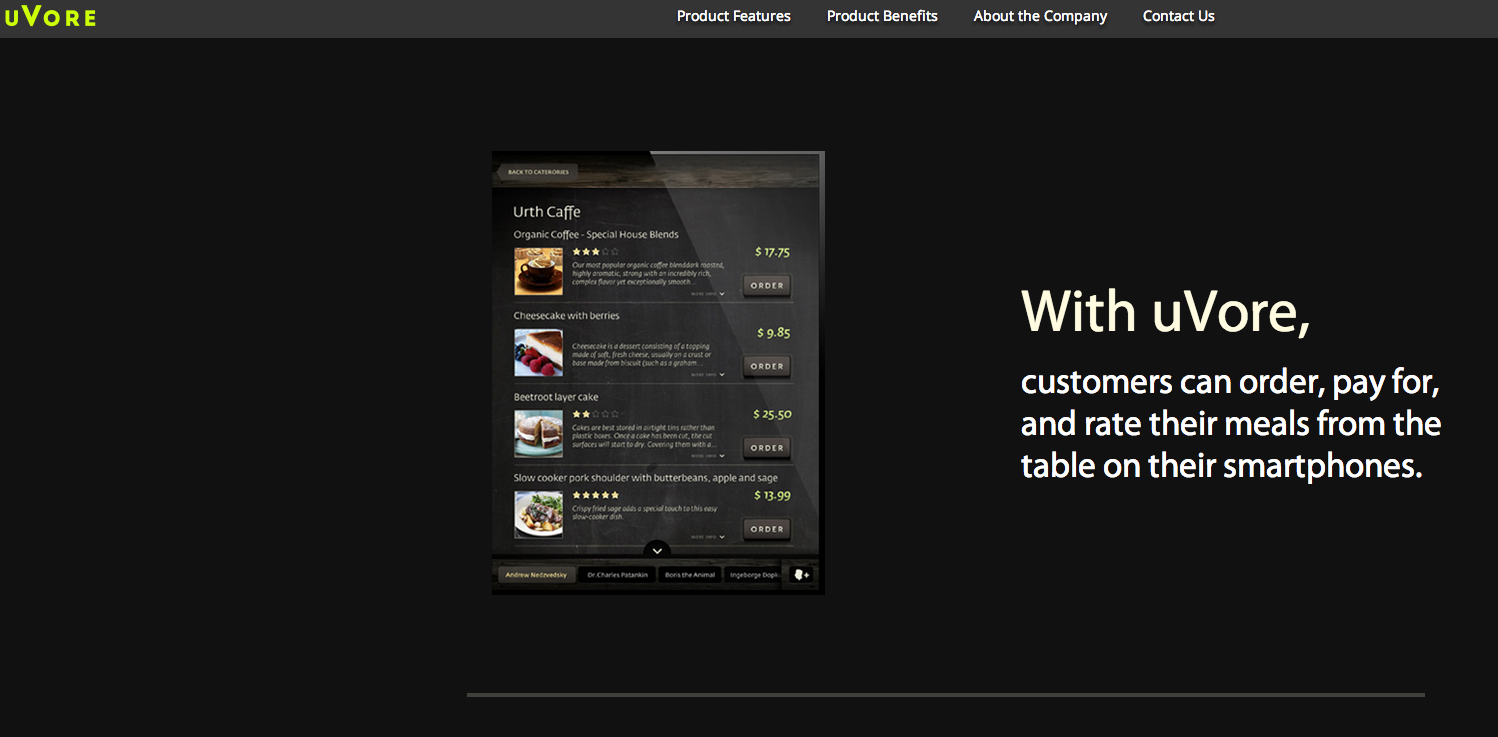Everyone wants to be the first to see the latest and greatest, so here’s a sneak preview of the companies that are going to kill it at DreamIt Ventures NY Demo Day, and the first class to debut under the aegis of new managing director Andrew Ackerman.
If there were a theme to this class as a whole, it would be I want what I want when I want it. Which means tech that solves the problem now. Or within the next minute. Or within a click or two. And definitely within the next 24 hours.
They’ve built their companies. Now they’re ready to deliver. And remember: timing is everything…
CLICK HERE TO SEE THE 12 STARTUPS THAT DREAMIT VENTURES IS ABOUT TO UNLEASH
Image credit: CC by Justin Brown
Tourlandish
Tourlandish is an on-demand marketplace for local activities and experiences, that gives new meaning to the phrase, Where do you want to go today? Tourlandish let’s travelers book last-minute tours, activities and experiences in 3 taps and under a minute. And at exclusive discounted prices. Last minute will do that. They went live last month and have already booked 25 vendors, over 150 experiences, and have partnered with a dozen hotels (that’s where the travelers are).
Traffic has been growing 80%, week over week. Why wouldn’t it? It’s easy. It’s fun. It’s spontaneous. It’s not the same old, same old that tour guides offer.
Locals are discovering it, too. They’re New York only right now, and offers all of the things that New Yorker have a hard time turning down: adventure, discovery, immediacy – and bargains.
Tourlandish features food tours, walking tours, cruises, theater tickets (at 50% off, no less, and you make your own seat selection) – everything but restaurants. Most popular activities to date: kayaking, skydiving, and a Long Island adventure park. Who knew?
Discovery has been through word of mouth, and they’re also incentivizing users to share by way of credits towards their next adventure. Sending out a small army of interns to tourist attractions helped, too, especially since Tourlandish offers adventures that tour directors don’t. Plus, if/when the weather suddenly changes and puts a damper on the Plans du Jour, simple open up the Tourlandish app and in under a minute, new itinerary and problem solved.
The team hails from Bangalore and applied to a few accelerators, but at soon as they received their acceptance from Dreamit, done deal. They had 20 days to sort out their visas and get to New York. Good training for a company that specializes in last minute adventures.
They know how to get it done – at a discount, no less.
New York is their new world headquarters, and since working with advertisers is in the game plan, what better place to be? They also plan to expand to other East Coast cities, including Miami, Orlando and DC.
Ah, the money part: no cash is ever exchanged. Tourlandish uses Stripe for all payments and takes a 20% commission from each activity that’s booked. Available on Android and iOS.
Slidebean
Think of Slidebean as the Instagram for presentation, instantly generating beautiful presentations and allowing users to focus on that element that needs their undivided attention: the content. Considering that there are 30 million presentations created each day and Slidebean is the simplest way to create one in mere minutes, that’s a lot of time saved – and a huge market potential. The product launched in June and there are already 15,000 signups, 2,000 active users per day – and 300 have converted to become paying customers.
The presentations can be shared or embedded on a website, which has helped to account for 95% of the users they’ve been acquiring: each new user has also been bringing in 1.5 additional users.
Their focus is on the education and small business sectors – both B2B and B2C – which is where they’ve been seeing the most traction.
The project started nine months ago at Startup Chile, but it was at DreamIt where they refined it and brought it to launch.
Founder and Costa Rica native Jose Cayasso (Caya) is a DreamIt alum (last venture: Pota-Toss).
They plan on always offering a free version of the product, as well as a basic version for downloadable presentation ($4.99/mo) and a premium version with added functionality ($5.99/mo).
Caya has a new team this time, and plans to put down root in New York, this time around. There are more opportunities for the company here, although come winter, well, a few trips to Costa Rica might be in order. But only for the sake of face time with the development team there, of course.
Zairge
…as in concierge. Here’s how Zairge is transforming the hotel industry: there are a lot of parts and pieces to making all of the operations of a hotel run smoothly. Zairge is a platform that facilitates interoperability between all of the moving parts. It’s an enterprise property management system, online travel agency/global distribution system liaison, Point of Sale System, Food & Beverage system, inventory tracker, housekeeping/maintenance platform – and everything in between, accelerating productivity for owners, employees and guests. In one powerful, easy to use, easy to learn, drag and drop system.
A sort of concierge-within-a-concierge.
“We trained one guy in his mid-60s, who couldn’t even turn on a tablet. Within a day, he was totally literate with the system,” said co-founder Dan Otto.
Guests walk up to a tablet, scan their information, and can go straight to their rooms. Checking out is just as easy – as is getting everything else they might need during their stay. In the meantime, hotel operators capture analytics in real time. Since it’s cloud based and mobile, they can also access the platform and make decisions from any device.
“We built the product so that it could integrate with hotels – and be inclusive with other developers, to make it a full solution,” said Otto.
The company is just coming out of beta and have already secured a partnership with the Scarlet Hospitality Group. With more to come…
The revenue model: $5 per room, per month. Monitoring such amenities as pool and spa are extra. The upper end boutique hotels and smaller hotel chains are the company’s target markets, and where they’ve been getting traction.
The team relocated from Williamsburg to participate in the DreamIt Accelerator. Colonial Williamsburg, where they first met while attending The College of William and Mary, in Virginia. Although they’ve quite taken to Brooklyn’s Williamsburg, where, after one of their usual 16 hour days, they can still get great food at one am. That works!
Acorn
Every now and then, an app comes along, and attention must be paid. Acorn is a next-generation reminder app that allows users to send notes or reminders that are time or location-sensitive – or both. So, say you’re low on milk. You send yourself an Acorn set to go off as you’re heading home from work, and passing your local grocery store. You can leave messages and reminders in physical locations. Write a note and choose a place, like a welcome home note. Or say you’re meeting up with a bunch of friends for dinner. You can also send an Acorn reminder at a set time before, just in case…
There have always been two issues in apps like this: battery efficiency and accuracy. Formerly, you could either have one or the other. Pick one.
“On 4SquareSwarm, the battery will drain swarm 5-7% in 20 minute,” explained Acorn co-founder and CEO Gabriel Otte, “With Acorn, it’s 1% an hour, in NYC. Acorn is like Google Keep, but it doesn’t suck.”
It’s not a fatuous boast, and the app is accurate as well, but to really understand what sets Acorn apart, you need to know a bit about Otte’s background.
Otte started his first company at age 13 – OSXPlanet, which earned him about $1,000/month – not bad for a 13-year-old. By 18, he was working at Apple, as one of four people doing aps API/GPS integration/AGPS for a secret project the company was working on at the time – the iPhone.
“I helped create a novel algorithm. The hardware wasn’t there before (to allow what Acorn is doing now). And the market is huge for location aware. Our latency is 45 seconds, and we’re accurate to within 100 meters. We found the secret sauce, and we’re patenting it now.”
Acorn launched their beta two weeks ago, and now have 500 users in 33 states, without having done any marketing at all. They’re already seeing 4.5 acorns dropped per person/per day, with an 80% pick up rate.
Does California native Otte plan to leave New York behind once the program ends?
“Maybe we’ll be bicoastal,” he said.
Their primary focus right now is on users and hitting critical mass. And as we know, from little acorns grow mighty oaks. Glad to see this company putting down roots in New York.
Fiestah
A few months back, when DreamIt held their usual first-look event to introduce their latest batch of startups, we must say that the refreshments were above average and much better than what you usually find at a meet-and-greet. This time around, it was handled by Fiestah.
Fiestah is an online marketplace for planning events, bringing together event organizer and vendors of every stripe, from the food to the flowers, and everything in between. They also provide event planning tools, and help organizers – whether they’re professionals or not – to stay on budget, and get all of the vendors paid, all from one secure platform.
Fiestah came out of a Startup Weekend in 2012, and the team has been together and bootstrapping the company ever since. They’ve served over 25,000 guests and 30,000 tasty meals since those early days, but when it was time to take it to the next level, they decided to go through an accelerator program. No sooner had they started the DreamIt program that they received their notification that they’d also been accepted to be part of Startup Chile.
Must have been an idea whose time had come.
That program starts not long after DreamIt wraps up. So, some of the team will be going to Santiago, and the rest will stay here. Co-founder and COO Nurul Yahya will be based in New York, but will be making trips to Chile.
It’ll be different. DreamIt introductions gave them industry mentors and traction with new clients.
“Before this, all of our clients found us through word of mouth or email marketing.”
They’ve been more focused on digital marketing.
“It has been great. Our acquisition costs have been going down weekly.”
They’ve also been piloting a new program, which is still under wraps and will be announced on Demo Day.
Which will be right before they leave for Startup Chile. It’s a six-month program, and will open a whole new market for them.
“In the South American market, everyone plans events,” said Yahya. And no founder worth their salt turns down an opportunity to expand into new markets.
Balloon
Balloon is a mobile app that helps friends get together at a moment’s notice. People use their mobile devices to easily send out impromptu invites to groups of friends to join them at specific locations (meals, pick-up sports, parties). Nearby group members receive push message invitations, see who’s going, RSVP and meet.
But here’s the special sauce: the messages are personalized, making it feel like a one-to-one invitation. So instead of receiving the group message and thinking, ‘meh, later,’ recipients are more likely to respond. Group members also get a reminder either an hour or 30 minutes before the event.
Again, a personalized reminder.
Ah, psychology, but we can’t confirm that co-founder David Taitz studied that particular subject during his days at Harvard, which is where he was, attending classes, when he started working on the then-project in January.
“We had a lot of unstructured time,” Taitz explained. But it wasn’t always easy to get friends to respond when he’d send out last-minute invites. “There were only en masse emails and groupme. It was a mess.”
And not as effective as he would have liked. Balloon launched in the app store in July, and the feedback has been very good.
“We’re just focused on users right now.”
That’s what he says, but then again, it’s more than just a day-of invite for events. He’s making plans for there to be ephemeral events as well. For example, you’re walking five blocks from, say, a J Crew store and you suddenly get a message that gives you a discount. All you have to do is say yes. Which could be a big plus for brick-and-mortar, or restaurants during off peak hours. Nothing draws people in quite like a discount.
And that personal touch.
PicSell
We all have stuff lying around that we don’t need, much of which ends up in that electronics graveyard formerly known as one of our closets. Studies show that most people have between $1,000-$2,000 worth of items just lying around gathering dust. But who wants to bother with selling these items online? There’s the effort of listing, answering emails, dealing with seller ratings, payment issues and (ugh!) shipping.
PicSell makes selling that stuff on line as simple as taking a picture.
Ok, three pictures.
Users send picSell three photos of the item they wish to sell, specify the brand and model, email the information to picSell and the company sells it at the highest price. That’s because they have a super-seller rating on multiple marketplaces, including eBay, Amazon, Etsy and Rakuten. Once it sells, picSell sends sellers a pre-paid, insured shipping label for pickup or drop off. Then they pay up. It’s simple, anonymous and profitable. No other service offers such a streamlined, minimal selling process: it all takes under a minute.
“The process takes longer when you’re selling things yourself on eBay,” said founder Ofir Almagor. “And Craig’s List can be sketchy.”
Founded in October, the company didn’t officially launch until they got to DreamIt and so far, so good. Electronics are big sellers – particularly smartphones – but they’ve also sold everything from spinning bikes to a kitchen range to faucets.
The site is particular popular – so far – with people who are moving and have items to get rid of (one happy customer paid for the move by selling on the picSell platform, Almagor told us). And with interior designers, who often buy more than they need, or have clients who change their minds about certain items. Some of the items on picSell are actually new.
“We sell anything that’s shippable,” said Almagor. And they take a percentage of each item sold.
Amazing what you can do now with just a few, well, picsells.
satis.fi
There’s nothing like a satisfied customer, and satis.fi is a SaaS solution that helps to satisfy customer feedback and issue resolution with its patent pending mobile app and enterprise-class bidirectional software solution. And it’s all done in real time. Which is what you want when there’s a potential issue: immediacy.
In other words, companies can now address possible negative customer comments before they ever hit social media, and we all know how much more difficult those are to deal once they’re out in the vapors.
Leveraging technologies such as iBeacons, QR codes, GPS, or the satis.fi app itself, satis.fi instantly alerts a business about a customer concern – or a positive experience. Those happen, too.
The enterprise dashboard keep businesses in the loop as to where their weaknesses are. This $37 billion problem is the reason why T Mobile, Mercedes Benz, Marriott Hotels, Indigo Hotels and Norwegian Cruise Lines are already working with satis.fi, as customers or in pilot programs.
Their target markets: business to business and business to consumers.
Think of it as the 1-800 How’s My Driving for the everything else. In real time.
They did slightly pivot – but just when it came to the name. They entered the program as SuperSolver. We all like super heroes. But there’s nothing like a satis.fied customer.
Bar & Club Stats
In the Age of Apps, would you believe that there are establishments that still check IDs as if tech had never happened? Fine, if you want to do it the old fashioned way, but in an age of Big Data, would you believe that there are venues that still check IDs, as if knowing who your customer is wouldn’t help to improve business?
There are 500,000 venues that sell products that require patrons to show proof of age and that’s (part of) what Bar & Club Stats is about. Based off an iPod, iPad, or iPhone, the B&CS ID scanners provide age verification services wherever alcohol tobacco and marijuana (yes, there’s that now, too) are sold and enable establishments to become smarter about their customers. The company aggregates anonymous demographic data (time of entry, age, gender, zip code) to see the number of repeat customers, average age and distribution, gender split, patron flow, compare days, compare weeks, creating a new data set to help users and marketers better understand their customers.
And speaking of being in the right place with the right data, New York State is currently introducing “Hard Card” legislation, which, if passed, would require bars and venues that sell liquor to minors to purchase an ID scanner or face a $2,000 fine.
“We see 300 downloads a day on iTunes,” said founder Benjamin Silbert, who is a lawyer by training. “They used ten of our scanners at the Beer & Bacon Classic at Citi Field.”
The B&CS ID scanner is also currently being used by some of the most popular bars, clubs, casinos and arenas in the United States and Canada. Other customers include the St. Louis Blues, Santos Party House, Lights All Night, Dream Downtown and Wahoo’s. In fact, the software is about to be deployed by a stadium in Rochester.
It’s the back end analytics that sets the app apart – and what seems to be bringing customers back and the word of mouth spreading.
“We know who’s there,” Silbert added. “We’re not just a dumb piece of machinery.”
Investormill
InvestorMill is the fastest way to find and chart economic data from trusted sources and go from start to chart in 30 seconds – without needing to have a degree in economics.
It all started when co-founder Dane Vrabac, an economist at Morgan Stanley, noticed that there were even sophisticated investors who had difficulty finding data. They could find the GDP, but there were different sources for the information, and those sources all had their own ways of slicing and dicing the data.
“We aggregate it in a way that makes it fast and easy to access. Economic data users are not necessarily economic data experts. People avoid looking for data, even in 2014, because it’s not easy. A Google search will take you to government websites, which aren’t easy to navigate. And once you find the data, it’s inconsistent from one provider to another. Which is the right source? It’s confusing. It’s not unified. It’s not user-friendly. And you won’t find it all in one place. It’s also designed as if everyone who looks for the data has a degree in economics – and they don’t. We wanted to develop something that was straight-forward, affordable, and would make it easy for you to find the data you needed, in one place.”
Investor Mill solves a number of problems, not the least of which is expense. Bloomberg terminals are $2k a month and Haver, which is not easily searchable, $1700 a month. Installation is also easy and in fact, doesn’t even require the time and skills of the IT department, or even an admin.
The company officially launched their open beta in May. In July, they turned on the paywall – and users are converting, including big Wall Street firms, hedge funds and educational institutions, for research purposes. Banks, day traders, independent investors and the smaller firms getting on board.
“We’re getting a great reception from independent research shops. That’s a growing trend, and it’s just beginning. The people laid off by the large banks and a lot of asset managers are starting their own thing. We make finding the data they need easy quick access so they don’t have to hire an analyst or new junior guy, or learn a new product.”
Users have free access on a 14-day trial bases.
“We have over 300,000 economic and financial indicators accessible from over 50 sources,” said Vrabac.
Vrabac and co-founder Robin Lahoud plan on expanding into specific industry verticals and to the customers for whom they will solve the biggest pain points.
Leave it to a Kansas-born economist to make those sophisticated information hunters feel, well, like they’re not in Kansas anymore.
Browsy
The premise couldn’t be simpler: Browsy transforms Pinterest fashion boards into browsable shopping catalogue. And what good is an online catalog if you can’t can’t make a purchase? Easily? Browsy identifies those products and helps shoppers buy them at the lowest price. The team started the company in December, launched the private beta July 7th. And already have 1500 sign ups, 200 active beta testers, and they’re rolling more people in on a daily basis.
“Users are coming back and saying they want to engage more with Pinterest. Now that they can figure out what’s in their pins, they value the content more,” said co-founder Sonali Pillay. “Before, they’d have to click through 20 different ‘buy’ links to be able to buy the products that they’d been lusting after for so long, because much of the time, the links didn’t work. People go on weird tears, for example, searching for an orange croc clutch that they could buy. We’re finally giving it to them. It’s exciting.”
As for the revenue model, Browsy gets a percentage on every purchase, as well as on click throughs. On average, they’re seeing 20 clicks/user, or $1/user, so they’re recouping their customer acquisition costs in the first log in.
“We’re not the usual FashionTech company,” said Pillay. Cost of customer acquisition is usually high, but Browsy is seeing a huge level of virality, thanks to the Pinterest platform.
“It’s been very economical for us. We’ve seen a 1.2 to 2.6 virality coefficient. That’s pretty staggering and it’s just the beginning. Pinterest is an incredibly efficient tool.”
Two more points excite Pillay.
“From the data we have, we see high indicator of there being an intent to purchase. We’re also good at attributing imagery – and determining the original source of the content. Fashion bloggers put up their pins, and as they circulate around Pinterest, the blogger loses any chance of seeing commissions, as they’re not attributed. You can’t recoup commissions off unattributed images.”
The Browsy back end is basically the IMBd of fashion images.
“We’ve built back end of 5+ million images, tagged with products. When you skim through your fashion pins, we’ll take you to a link where you can find out more about the item – and even purchase it. We’re an ecommerce enabler and we’ll find you the lowest price or the greatest discount.”
Each user gets a collaborative board that contains just their shoppable pins.
“You drop it into your Pinterest profile and you’ll have your own shopping cart on Pinterest.
Their data comes through affiliate networks, thousands of retailers, and images from fashion bloggers or street style setters.
“We understand the content originator, where it is, how to find – and how to find it at the best price. It’s a pretty comprehensive package of information about any one image.”
Gotta love a platform that makes this much sense – and saving customers dollars just makes it that much more attractive.
Uvore
Be they carnivore, herbivore or omnivore, humans are not particularly known for their patience when they’re waiting to order a meal or waiting for the server to come around with the check at the end of it at a restaurant. First, they want to be fed. Then they’re ready to leave.
Uvore is a mobile app designed to make all of those carnivores, herbivores and omnivores happy by allowing customers order and pay for meals at their convenience.
All of which means faster customer turnaround, allowing the wait staff to concentrate on service, qua, building relationships. And restaurants get to learn the preferences of their clientele. Ultimately, it’s also about happy customers, and that’s always a win.
So a guy walks into a bar… Actually, it was a restaurant and the guy was uVore co-founder Obinna Emenike. He knew what he wanted to order, but still had to wait forever for the waiter. When he was finished with his meal, again, he had to wait forever for the server to bring him his check. And then return with his processed credit card. Emenike thought, seriously? In 2012??? There had to be a technology solution. And in 2014, that may well be Uvore. So he convinced his college roommates – both computer scientists – to relocate from the Bay Area where there’s really just not enough tech going on, and join him at DreamIt.
“We started with full service, sit-down restaurants, but found we got a lot of traction from fast/casual restaurants, too. Now we have two different sets of restaurants that we’re focusing on – sit down and casual/fast.”
DreamIt did help them to widen their scope and it worked. They’re launching their pilot next week, with a few casual/fast restaurants within a four to five block radius of each other in Manhattan’s Midtown West, like Mangia Organics, the Picnic Basket, Untamed Sandwiches, and Sushi and Deli Box, if you happen to be in the neighborhood and give it a go. That’s also when they’ll be officially launching their iPhone and Android apps.
Emenike’s personal favorite when it comes to restaurants: Patisserie Des Ambassades in Harlem, but no uVore for them quite yet. They’re still outside of the company’s immediate purview. Quelle dommage!



